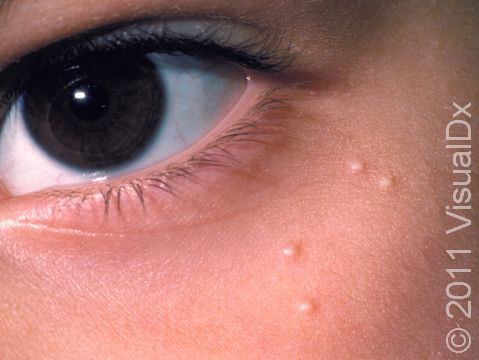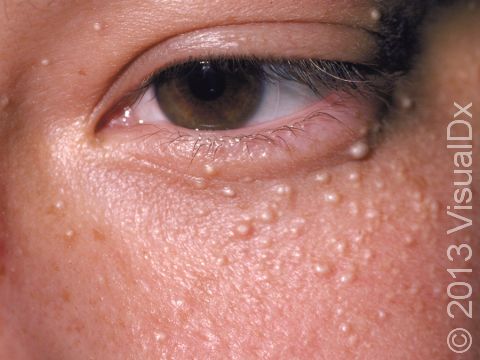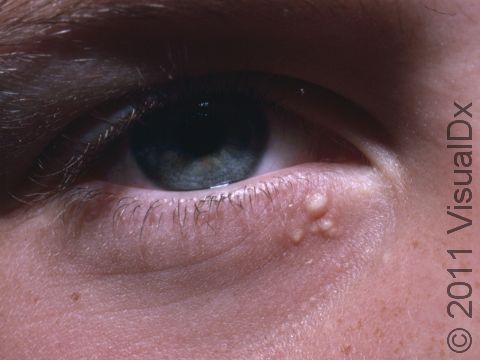Milia
Milia are common, normal skin findings that look like tiny white bumps, usually on the face. They can occur in people of all ages but are most common in newborn babies, where they appear on and around the nose. In teens and adults, they are commonly found on the cheeks and around the eyes. Milia are formed when the top layer of skin does not shed normally but instead becomes trapped in a tiny pocket on the surface of the skin. This is similar to how some acne forms, but milia are not inflamed like acne, and treating milia with acne therapies will only irritate the skin. Your doctor can help you differentiate between acne and milia and can recommend proper treatment.
Who's At Risk?
Anyone of any age can get milia. As noted above they are very common in infants (most babies will be born with or develop them) and quite common in children, teens, and adults. A form of milia called secondary milia can develop after damage to the skin such as from sunburn, blistering disorders, or even long-term sun exposure.
Signs & Symptoms
The most common locations for primary milia include:
- Around the eye (periorbital area) in children and adults
- Around the nose, especially in infants
The most common locations for secondary milia include:
- Anywhere on the body where another skin condition exists
- On the faces of people who have had a lot of damage from sun exposure
A milium appears as a small (1–2 mm) white-to-yellow, dome-shaped bump on the outer surface of the skin.
Self-Care Guidelines
Although milia are found in the outer (superficial) layers of skin, they are difficult to remove without the proper tools. Do not try to remove them at home, as you may leave a scar.
Primary milia found in infants tend to heal on their own within several weeks, though the secondary milia found in adults tend to be long lasting.
Treatments
If the diagnosis from the doctor is secondary milia, he or she will likely treat the other skin condition in that area, if necessary. Other treatments for milia include:
- Topical retinoid cream such as tretinoin, tazarotene, or adapalene
- Removal with a sterile lancet or scalpel followed by use of a special tool (a comedone extractor)
- A series of fruit acid peels or microdermabrasion procedures at the dermatologist’s office
Visit Urgency
See a dermatologist or another physician for evaluation if you notice any new bump on the skin.
Trusted Links
References
Bolognia, Jean L., ed. Dermatology, pp.1722-1723. New York: Mosby, 2003.
Freedberg, Irwin M., ed. Fitzpatrick’s Dermatology in General Medicine. 6th ed. pp.601, 604, 780. New York: McGraw-Hill, 2003.
Last modified on August 16th, 2022 at 2:45 pm

Not sure what to look for?
Try our new Rash and Skin Condition Finder


